Museum
concept
P.V. dunaev
The Russian railways museum exhibition is naturally divided into thematic clusters arranged in chronological order in accordance with historical periods. Each period has its characteristic features and peculiarities, but they are all interconnected. This connection in many ways resembles the extensive network of railways, where travel is impossible without turns and switches. Visitors of the museum begin their journey along the route to find themselves in the context of different places, time periods and events associated with the Russian railways.
Walking through the exhibition halls, our visitors come across a variety of interactive, multimedia, and kinetic objects that organically complement the museum collection while breaking the possible monotony of classic exhibition narrative. The semantic center of the exhibition concept is a large-scale multimedia and interactive installation “The Hands of Time”. Visitors can literally, physically rotate the mechanism, moving the clock hands and switches of the railway tracks to show many time periods of railway construction in Russia, revealing a variety of historical plots and geographic locations.
Not only the museum possesses a unique collection of historical rolling stock, but also its modern version is equipped with a huge number of cutting-edge interactive and multimedia exhibits, which are intertwined into the display space to create a certain rhythm of perception for visitors, so it never becomes monotonous. Our modular navigation system, part of an integrated set of graphic solutions deserves to be mentioned as well as a series of sculptural compositions showing historical and modern railway professions.
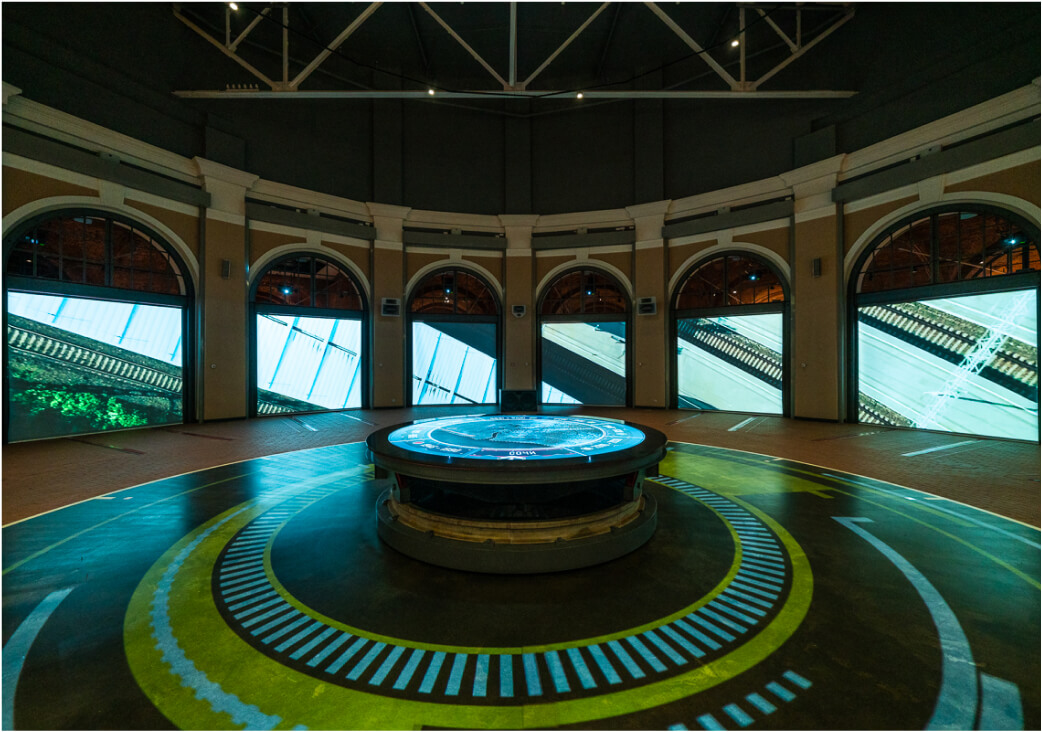
“The Hands of Time” is a large-scale architectural, multimedia, interactive, kinetic installation, that reflects the core concept of the museum. Its slogan “Move the arrows of time!” encourages visitors to try turning a mechanism of the interactive table, to select a historical period and plunge into all the information and visual content. At the same time, while the mechanism is rotating, visitors are shown how the railway network changed and developed. After the choice is made, the audience is presented with a historical plot shown on projection screens located in the arches of the railway roundhouse. The multimedia kinetic table for content management in a certain artistic way performs the function of a turntable, which was historically located exactly at that spot. That feeling of setting a turntable into movement is complemented by accompanying multimedia projections on the floor, the walls, and the ceiling, involving the entire space of the hall in the overall action, showing the progress of Russian railway network construction
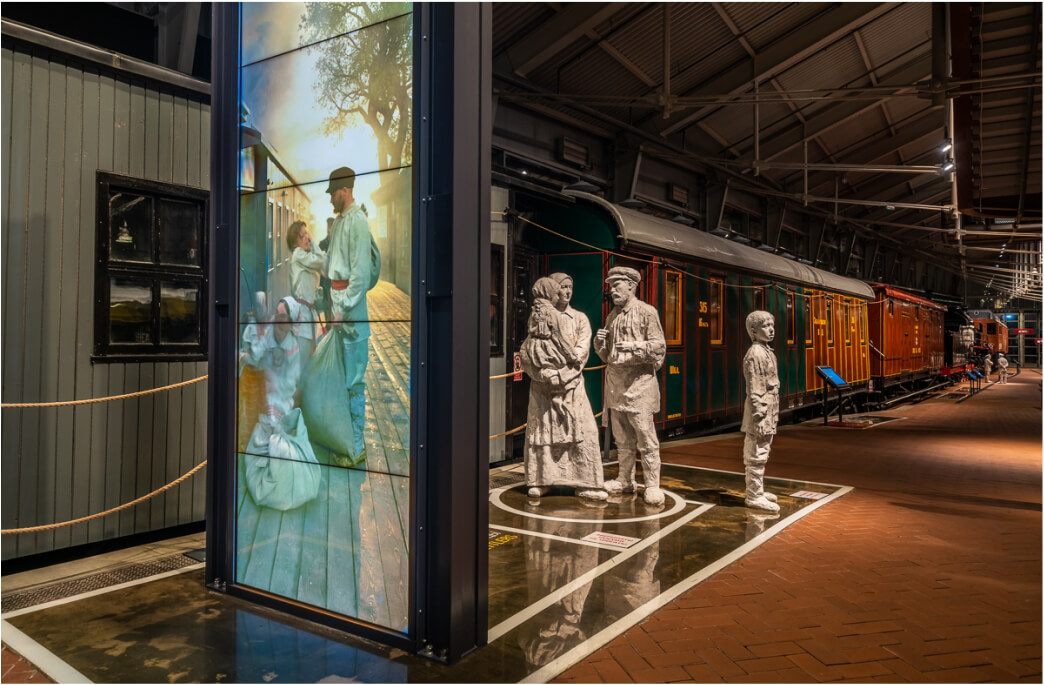
The museum has prepared a series of interactive multimedia installations which sometimes come as a surprise. Historical scenes frozen in the form of sculptural compositions are set in motion by the viewer’s actions. Many of the characters and scenes are related directly to the items of the rolling stock next to them
The sculptures were modelled after the actors who took part in filming of the historical pieces, thereby ensuring that effect of coming alive
Artistic and technical solutions
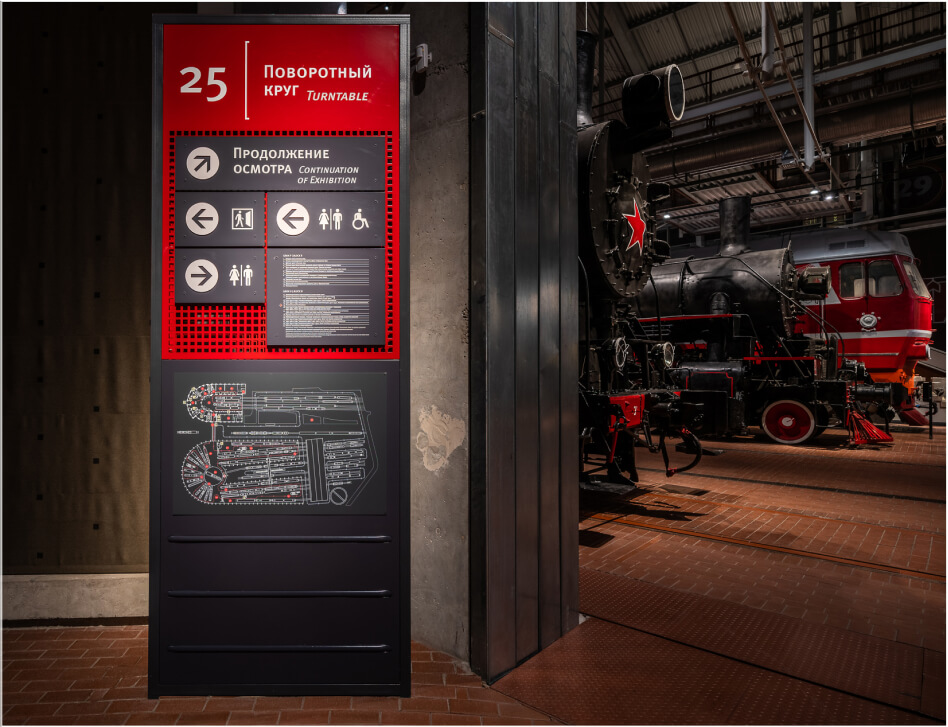
The integrated navigation system of the museum is based on modular principle, which allows to add new elements to the system and adjust visiting routes. Structural elements of the navigation system are implemented in accordance with the technical theme of the exhibition
Graphic style was developed to match the Russian Railways brand and corporate style
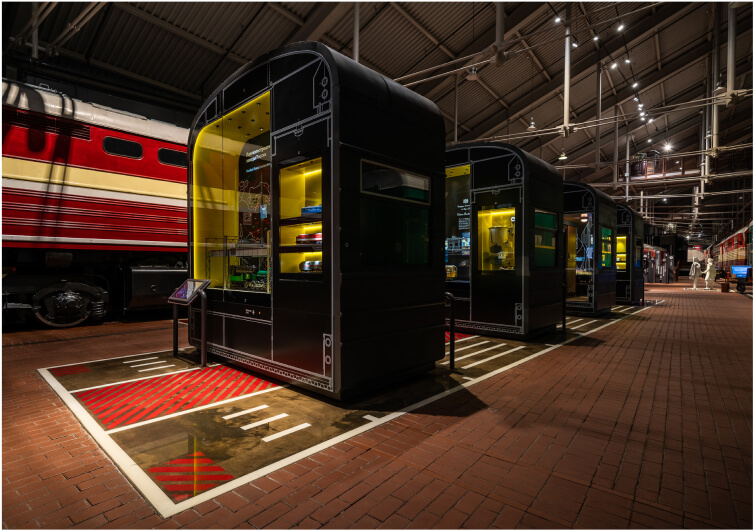
The showcases of the museum are meant to be interesting not only for their contents, but also for the way the artefacts are exhibited. For example, “Passenger transportation” is represented by showcases shaped as segments of passenger carriages, and “Freight transportation” showcases imitate railway tanks
To form an overall thematic context, showcases are supplemented with graphic elements on the floor
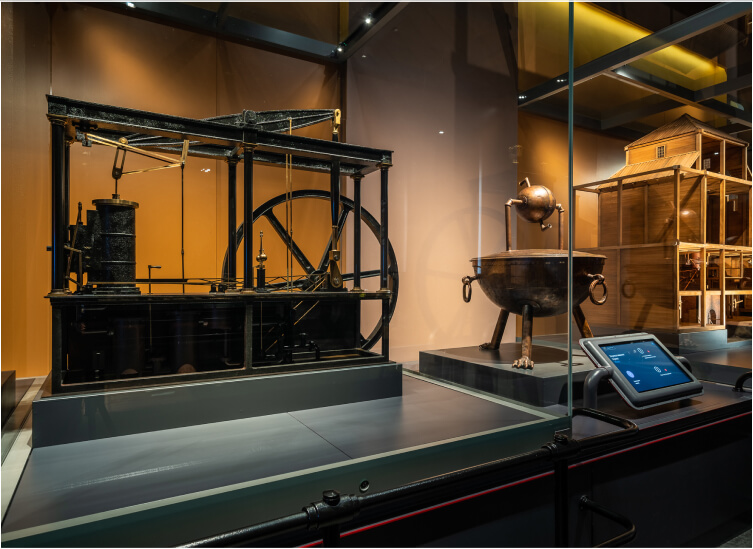
A large number of kinetic models and layouts in the exhibition allow to demonstrate more accurately how historical mechanisms operated. They also introduce certain dynamics, enrich the museum image, and make it even more attractive for visitors of various age groups
Layouts and models are set in motion when triggered by a sensor or using the menu on touch screens
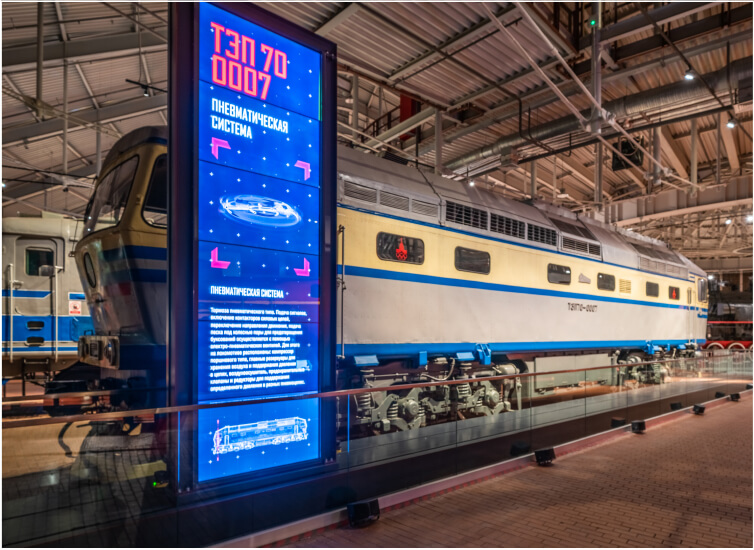
The museum presents a range of sophisticated multimedia installations of various scale: from huge scanners showing contents of railway cars and locomotives to miniature models of railway infrastructure. All the elements of the museum multimedia complex are equipped with remote control and are enrolled into the general automated control system
Several installations of the museum have received international industry awards
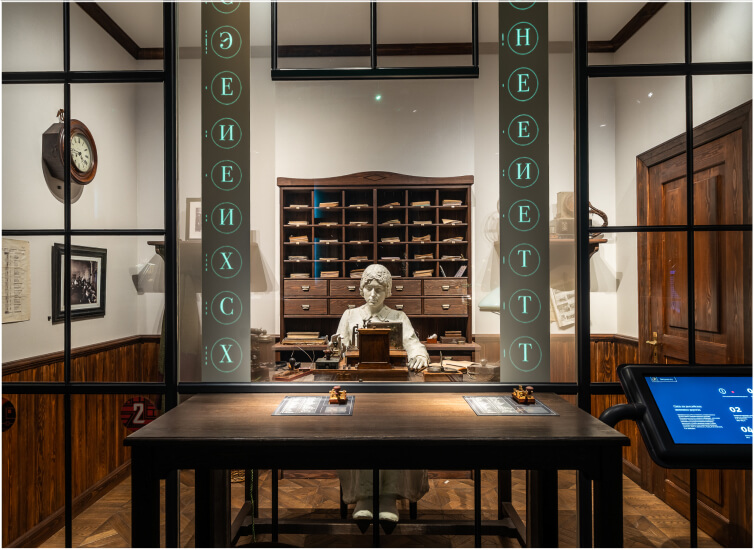
The key themes of the museum exhibition are represented by monumental and detailed architectural fragments that incorporate structural elements, staged scenes, sculptural compositions, information and reference systems and multimedia components. The main principles for building the space are scientific reliability, ergonomics, and purity of image
The photo shows the Telegraphist installation, which includes two multimedia telegraph machines that allow visitors to send messages to each other using Morse code
D. Rivera "Industrial Detroit", 1933
